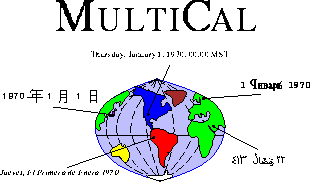|
|
|
Publications
- Curtis E. Dyreson and
Richard T. Snodgrass.
Timestamp Semantics and Representation.
Information Systems,
18(3), 1993, pp. 143-166.
PDF
-
Curtis E. Dyreson
and Richard T. Snodgrass,
A Timestamp Representation.
In The TSQL2 Temporal Query Language.
Richard T. Snodgrass, editor.
Kluwer Academic Press, 1995. pp. 471-496.
DBLP Electronic Edition
Abstract
Many database management systems and operating systems provide
support for time values.
At the physical level time values are known as timestamps.
A timestamp has a
physical realization and a temporal interpretation.
The physical realization is a pattern of bits while
the temporal interpretation is the meaning of each bit
pattern, that is, the time each pattern represents.
All previous proposals defined timestamps in terms of seconds.
However, as we show, there are at least seven definitions
of this fundamental time unit.
We propose a more precise temporal interpretation,
the time-line clock, that
constructs a time-line by using
different well-defined clocks in different periods.
We also propose timestamp
formats for events, intervals and spans.
These formats can represent all of time
to the granularity of a second, and
all of recorded history to a finer granularity
of a microsecond.
Our proposed formats were designed to be more space and time efficient
than existing representations.
We compare
our formats with those used in common operating systems
and database management systems.
Curtis E. Dyreson
© 1993-2001. All rights reserved.
|
